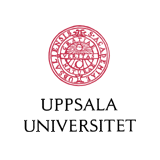|
Evaluation of a 4G Uplink System
Based on Adaptive Single-carrier TDMA.
Wei Wang
,
Chalmers
Tony Ottosson
,
Chalmers U. of Technology
Tommy Svensson
,
Chalmers U. of Technology and
Mikael Sternad
, Uppsala University.
IEEE 62nd Vehicular Technology Conference
,
Dallas, TX, USA, Sept 25-28 2005. © IEEE
-
Outline:
-
The Swedish Wireless IP project studies
problems that are crucial in the evolution of UMTS towards high
data rates, as well as in future 4G technologies aimed at
rapidly mobile terminals. The goal is to attain higher
throughputs for packet data in particular in downlinks,
without unnecessary
bandwidth expansion and while providing acceptable
quality of service for various classes of traffic.
This research is also performed within the
EU Integrated Project WINNER.
At IEEE VTC-Fall 2003, we presented our
concept for an adaptive OFDM downlink
in four interrelated papers (see links below).
We are also performing research on corresponding
TDMA/OFDMA uplinks.
However, high Peak-to-Average Power Ratio (PAPR)
is an inherent drawback of OFDM, which requires
highly linear transmitting power amplifiers and more power
back-off than single-carrier systems with the same average
power output. This will directly translate into higher RF
front-end cost and faster battery drain in the uplink
mobile terminals.
Accurate time and frequency synchronization for
different active users in the uplink is also a problematic issue
in an OFDM based system.
In this paper, we therefore investigate
an alternative, the use of TDMA single-carrier
transmission in adaptive uplinks.
-
Abstract:
-
Recent research has shown that a single-carrier system
with frequency domain equalization can be a potential
alternative to an OFDM-based system in a single user case.
In this paper we propose and evaluate an adaptive single-carrier
TDMA uplink with scheduling for broadband cellular
packet data systems.
Frequency division duplex (FDD)
is assumed. Multi- user channel estimation and channel
prediction are considered. The adaptive modulation scheme
is optimized to maximize the throughput including also the
ARQ part of the transmission.
Frequency domain equalization
is employed to combat the inter-symbol-interference (ISI).
With the proposed design, the simulation results show
that the multiuser diversity gain in spectral efficiency is
limited in a wide-band system, which indicates that an
OFDM based system might be a more favorable candidate.
-
Related publications:
-
Proc. of the IEEE (Dec. 2007)
invited paper on
adaptive transmission in beyond-3G wireless systems.
-
Paper 1 at VTC2003,
on adaptive modulation, multiuser diversity
and channel variability within bins in downlinks.
-
Paper 2 at VTC2003,
on the OFDM downlink and cell planning for high SIR.
-
Paper 3 at VTC2003,
on OFDM downlink channel estimation and channel prediction.
-
Paper 4 at VTC2003,
on the impact of prediction errors on the adaptive modulation.
-
An earlier paper
(WWRF 2002) on adaptive TDMA/OFDMA uplinks.
-
Source:
-
Pdf, (259K)
|
The Wireless IP Project Homepage
|
Main
entry in list of publications
|
This material is posted here with permission of the IEEE.
Such permission of the IEEE does not in any
way imply IEEE endorsement of any of Uppsala University's
products or services.
Internal or personal use of this material is permitted.
However, permission to reprint/republish this material for
advertising or promotional purposes or for creating new collective
works for resale or redistribution must be obtained
from the IEEE by writing to [email protected].
By choosing to view this document, you agree to all
provisions of the copyright laws protecting it.
|

